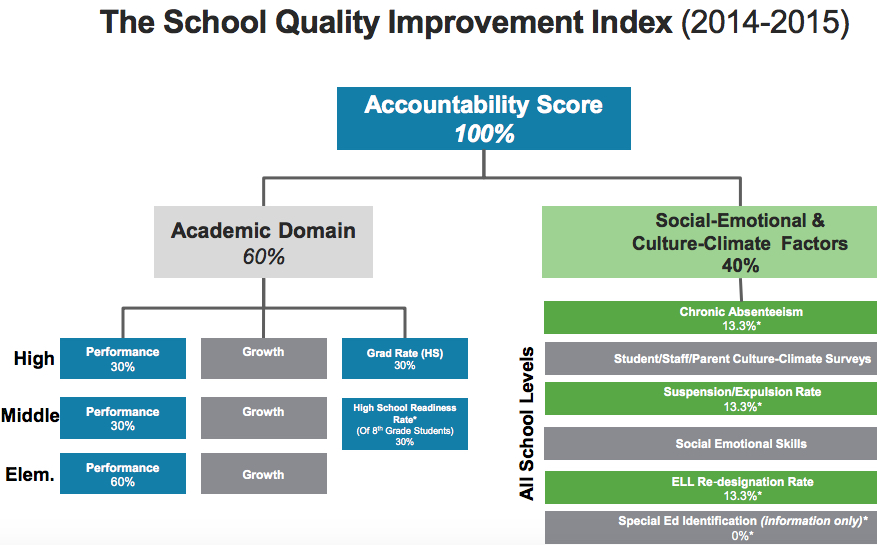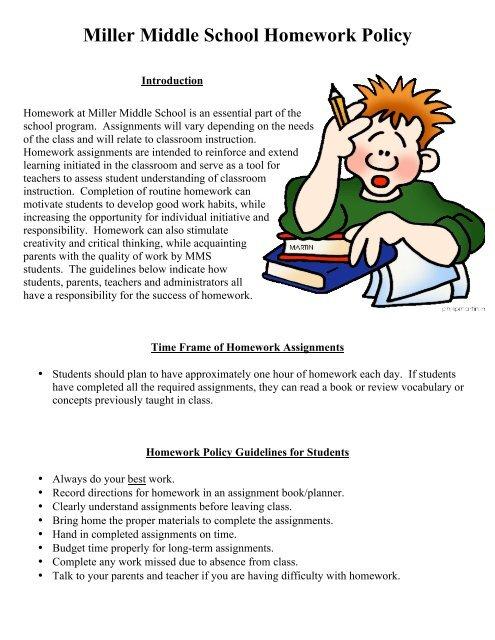In classrooms across the country, the traditional image of stacks of homework assignments waiting to be completed after school is beginning to shift. Some school districts are rethinking long-held beliefs about homework, choosing instead to cut back or even eliminate these nightly tasks. This emerging trend invites a closer look at the reasons behind such decisions, challenging educators, parents, and students to reconsider what truly supports learning and well-being. Why are some districts stepping away from homework, and what might this mean for the future of education?
Table of Contents
- Rethinking Homework’s Role in Student Wellbeing
- Balancing Academic Rigor with Family Time
- The Impact of Homework on Equity and Access
- Innovative Alternatives to Traditional Homework Assignments
- Guidelines for Implementing Homework Policy Changes
- Frequently Asked Questions
- In Conclusion
Rethinking Homework’s Role in Student Wellbeing
For decades, homework has been viewed as a cornerstone of academic success, yet growing evidence suggests it may be doing more harm than good when it comes to student wellbeing. Instead of reinforcing learning, excessive assignments can lead to stress, burnout, and a diminished passion for education. Schools revisiting their policies are now prioritizing mental health alongside academic achievement, challenging the assumption that more homework equals better results.
Key concerns driving this shift include:
- Increased anxiety and sleep deprivation among students
- Disparities in home environments affecting homework completion
- Reduced time for physical activity, hobbies, and family interaction
Districts experimenting with reduced homework requirements report surprising improvements in student engagement and overall happiness. Teachers observe that when homework is purposeful and limited, students come to class more prepared and enthusiastic. This approach also encourages educators to design assignments that deepen understanding rather than simply occupy time.
| Impact Area | Traditional Homework | Reduced Homework Model |
|---|---|---|
| Student Stress Levels | High | Moderate to Low |
| Time for Extracurriculars | Limited | Expanded |
| Parental Involvement | Inconsistent | More Meaningful |
| Academic Performance | Variable | Stable or Improved |
Balancing Academic Rigor with Family Time
In many households, the evening routine often becomes a tug-of-war between completing assignments and engaging in meaningful family interactions. Reducing homework demands doesn’t mean compromising educational quality; rather, it fosters an environment where students can recharge and cultivate relationships that are equally critical for their development. When academic expectations are thoughtfully aligned with family dynamics, children gain emotional support that enhances their ability to focus and perform in school.
Families benefit from this recalibration in several ways:
- Improved communication: Less homework allows more time for open conversations, strengthening bonds and easing stress.
- Enhanced well-being: Balanced schedules contribute to better mental health for both students and parents.
- Shared learning experiences: Parents can participate in educational activities without the pressure of completing assignments, turning learning into a collaborative and enjoyable experience.
Educators, too, recognize that when students are overwhelmed by excessive out-of-class work, the quality of learning diminishes. The goal is to nurture curiosity and critical thinking without encroaching on the vital downtime that family life provides. Schools that have piloted reduced homework policies report a positive shift in student attitudes, where the focus moves from quantity to meaningful understanding.
| Benefit | Impact on Students | Impact on Families |
|---|---|---|
| Less Stress | Improved focus and motivation | More relaxed evenings |
| More Quality Time | Better emotional support | Stronger family bonds |
| Balanced Schedule | Increased engagement in class | Opportunities for joint activities |

The Impact of Homework on Equity and Access
Homework has long been viewed as a cornerstone of academic success, yet its role in perpetuating educational inequities is prompting many districts to reconsider its place in students’ lives. For families with limited resources, after-school assignments can become a source of stress rather than learning, highlighting disparities that go beyond the classroom walls.
Access to resources is a significant factor affecting students’ ability to complete homework effectively. Without reliable internet, a quiet study space, or parental support, many students find themselves at a disadvantage. These challenges not only hinder academic performance but also deepen the achievement gap between socioeconomic groups.
- Lack of technology and internet access
- Inconsistent parental involvement due to work schedules
- Limited availability of extracurricular academic support
Districts opting to reduce or eliminate homework requirements are often motivated by the desire to level the playing field. By doing so, they aim to create environments where learning during school hours is sufficient and equitable. This shift also encourages schools to innovate, integrating more hands-on and collaborative learning experiences that do not rely on external resources.
| Factor | Impact on Homework Completion | Equity Concern |
|---|---|---|
| Internet Access | High | Students without reliable internet struggle to research and submit assignments. |
| Parental Support | Medium | Parents working multiple jobs have limited time to assist with homework. |
| Quiet Study Space | High | Overcrowded living conditions make concentration difficult. |
By acknowledging these hurdles, educational leaders hope to foster a more inclusive system that prioritizes equitable learning opportunities over traditional homework models. This approach not only addresses immediate academic disparities but also promotes a more holistic view of student well-being and success.

Innovative Alternatives to Traditional Homework Assignments
Educators across various districts are embracing fresh approaches that reimagine how students engage with learning outside the classroom. Moving away from traditional worksheets and repetitive problem sets, these innovative alternatives aim to foster creativity, critical thinking, and real-world application. This shift not only respects students’ diverse learning styles but also encourages deeper understanding through meaningful experiences.
Some of the most successful alternatives include:
- Project-Based Learning: Students collaborate on projects that reflect real-life challenges, integrating multiple subjects and skills.
- Reflective Journals: Encouraging students to document their learning journey, thoughts, and questions to promote metacognition.
- Educational Games and Simulations: Interactive platforms that make learning dynamic, fun, and personalized.
- Community-Based Assignments: Tasks that involve local engagement, such as volunteering or interviewing community members.
To illustrate how these alternatives compare to traditional homework in terms of student engagement and skill development, consider the table below:
| Homework Type | Engagement Level | Skill Development | Creativity Encouraged |
|---|---|---|---|
| Traditional Worksheets | Low | Basic Recall | Minimal |
| Project-Based Learning | High | Analysis & Collaboration | Extensive |
| Reflective Journals | Moderate | Self-Assessment | Moderate |
| Educational Games | High | Problem Solving | High |
By integrating these innovative alternatives, schools empower students to take ownership of their learning, making education a more engaging and personalized experience. It also allows teachers to tailor assignments that resonate with student interests and future aspirations, bridging the gap between classroom knowledge and real-world application.

Guidelines for Implementing Homework Policy Changes
Successfully revising homework policies requires a thoughtful approach that balances educational goals with student well-being. Districts should begin by engaging all stakeholders-teachers, parents, and students-to gather diverse perspectives and foster a sense of shared ownership in the process. Transparency in communication helps ease concerns and builds trust as the community adjusts to new expectations.
Clear, flexible frameworks allow educators to tailor homework assignments to individual classroom needs while adhering to district-wide goals. Consider implementing tiered homework models that accommodate different learning paces and styles, ensuring that assignments remain meaningful without becoming overwhelming.
- Set realistic time limits for homework per grade level.
- Encourage project-based and collaborative assignments.
- Provide professional development to help teachers design effective homework.
- Regularly assess homework’s impact on student learning and well-being.
Below is a simple guideline table illustrating recommended maximum homework times per grade, which some districts have adopted as part of their policy changes:
| Grade Level | Recommended Max Homework Time |
|---|---|
| Elementary (K-5) | 20-30 minutes per day |
| Middle School (6-8) | 45-60 minutes per day |
| High School (9-12) | 60-90 minutes per day |
Frequently Asked Questions
Q&A: Why Some Districts Are Cutting Homework Requirements
Q: What is prompting some school districts to reduce or eliminate homework?
A: Many districts are reevaluating homework because of growing concerns about student stress, equity issues, and the impact on family time. Educators and parents alike are questioning whether traditional homework truly enhances learning or merely adds pressure.
Q: Are there studies supporting the reduction of homework?
A: Yes. Research shows that excessive homework can lead to burnout and diminish students’ love of learning, especially in younger grades. Some studies suggest that quality, rather than quantity, of homework is more effective in reinforcing concepts.
Q: How does cutting homework affect students’ academic performance?
A: The results vary. In some cases, reducing homework has improved student engagement and creativity without negatively impacting test scores. The focus shifts to in-class learning and meaningful assignments rather than repetitive tasks.
Q: What equity issues are connected to homework?
A: Homework can widen achievement gaps because not all students have equal access to resources like quiet study spaces, internet access, or parental support. By cutting homework, districts aim to level the playing field and reduce stress for disadvantaged students.
Q: How are teachers adjusting their teaching methods in districts with less homework?
A: Teachers are adopting more interactive and collaborative classroom activities and emphasizing mastery during school hours. They may also assign optional or personalized tasks that encourage independent exploration without the pressure of mandatory homework.
Q: What do parents think about reducing homework?
A: Opinions are mixed. Some parents appreciate the extra family time and reduced stress, while others worry about losing opportunities for their children to practice skills at home. Communication between schools and families is key to addressing these concerns.
Q: Could cutting homework become a widespread trend?
A: It’s possible. As more districts experiment with homework policies and share outcomes, the conversation continues to evolve. The future may hold a more balanced approach, prioritizing student well-being alongside academic achievement.
Q: What’s the bottom line?
A: Cutting homework is part of a broader effort to rethink education in a way that supports all students’ mental health and learning needs. It’s not about eliminating learning but about making it more effective, equitable, and enjoyable.
In Conclusion
As the landscape of education continues to evolve, the decision by some districts to cut back on homework challenges traditional notions of learning and achievement. While the debate over homework’s value is far from settled, these shifts invite us to reconsider what truly supports student growth-balancing academic rigor with well-being, creativity, and curiosity. Ultimately, whether homework remains a staple or becomes a relic, the goal remains clear: fostering environments where every student can thrive beyond the classroom walls.

